Post Graduate Engineer Trainee [pget]
50+ Post Graduate Engineer Trainee [pget] Interview Questions and Answers
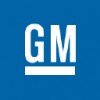
Asked in General Motors

Q. Design a shaft under bending, torsion and axial loads. Which theory you will use if it is to be made with ductile material? ANS- Tresca or Von-Mises Then questions related to these two theories, graphs, which o...
read moreDesigning a shaft under bending, torsion and axial loads using Tresca or Von-Mises theory for ductile material.
Shaft design involves considering the effects of bending, torsion, and axial loads.
Tresca theory assumes that yielding occurs when the maximum shear stress in a material reaches a critical value.
Von-Mises theory assumes that yielding occurs when the equivalent stress in a material reaches a critical value.
Ductile materials are those that can undergo significant plast...read more

Asked in General Motors

Q. If a spring of length L and stiffness K is cut into two equal parts and those two parts are attached in parallel, what is the resultant stiffness?
Resultant stiffness of two equal parts of a cut spring attached in parallel is 4K.
When two springs are attached in parallel, the resultant stiffness is the sum of their individual stiffness.
The stiffness of a spring is directly proportional to its length and inversely proportional to its cross-sectional area.
Therefore, when a spring of length L and stiffness K is cut into two equal parts, each part will have a length of L/2 and a stiffness of 2K.
When these two parts are attac...read more
Post Graduate Engineer Trainee [pget] Interview Questions and Answers for Freshers

Asked in General Motors

Q. What is the natural frequency of a simple mass system, considering the mass of the spring? (Provide the derivation.)
The natural frequency of a simple mass system with the mass of the spring considered.
Natural frequency is the frequency at which a system oscillates without any external force.
The formula for natural frequency is sqrt(k/m)
Where k is the spring constant and m is the mass of the system.
The mass of the spring is added to the total mass of the system.
Example: A mass of 2 kg is attached to a spring with a spring constant of 10 N/m. The mass of the spring is 0.5 kg. The natural fre...read more
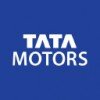
Asked in Tata Motors

Q. Which manufacturing process is used in chassis manufacturing?
Chassis manufacturing primarily uses metal forming processes like stamping and welding to create strong, lightweight structures.
Metal stamping is commonly used to shape chassis components from sheet metal.
Welding techniques, such as MIG and TIG welding, are employed to join different parts of the chassis.
Hydroforming is another method that uses high-pressure fluid to shape metal into complex forms, often used in automotive chassis.
Die casting can be used for producing lightwe...read more
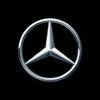

Q. What are the criteria for designing a chassis, and what parameters would you consider?
The criteria for designing a chassis involves considering various parameters such as structural integrity, weight distribution, material selection, and manufacturing processes.
Structural integrity is crucial to ensure the chassis can withstand the loads and stresses it will encounter during operation.
Weight distribution plays a key role in determining the vehicle's stability and handling.
Material selection involves choosing materials with appropriate strength, stiffness, and ...read more

Asked in Escorts Kubota Limited

Q. Is the Ceria bed used in the design of a catalytic converter cheaper than the bed used in available catalytic converters?
The cost of Ceria bed used in the design of a catalytic converter is lower than the bed used in available catalytic converters.
Ceria is a cost-effective material for catalytic converters.
It is widely used in the automotive industry due to its affordability.
Compared to other beds used in catalytic converters, Ceria offers a more economical solution.
The lower cost of Ceria bed does not compromise the performance of the catalytic converter.

Asked in General Motors

Q. What are different ways of crossing the natural frequency of a system and operating above this condition?
Different ways to operate a system above its natural frequency
Adding mass to the system
Changing the stiffness of the system
Applying external force to the system
Using active control techniques
Using passive control techniques
Using hybrid control techniques

Asked in General Motors

Q. What is the first natural frequency of a semi-definite system?
The first natural frequency of a semi-definite system is zero, which represents rigid body motion.
The first natural frequency of a system is the frequency at which it oscillates without any external force applied.
A semi-definite system has one or more degrees of freedom that are constrained, resulting in rigid body motion.
The first natural frequency of a semi-definite system is always zero, regardless of the number of degrees of freedom.
Examples of semi-definite systems inclu...read more
Share interview questions and help millions of jobseekers 🌟


Asked in General Motors

Q. What is the hydrostatic state of stress, and which theory of failure would you use?
Hydrostatic state of stress is when stress is applied uniformly in all directions. The theory of failure used is Maximum Shear Stress Theory.
Hydrostatic state of stress occurs when stress is applied uniformly in all directions.
It is characterized by a state of zero shear stress.
The theory of failure used for hydrostatic stress is Maximum Shear Stress Theory.
This theory states that failure occurs when the maximum shear stress in a material exceeds the shear strength of the mat...read more

Asked in Escorts Kubota Limited

Q. Which orientation, horizontal or vertical, gives a rectangle greater load-bearing capacity?
The rectangle will have greater load bearing capacity in the vertical position.
The load bearing capacity of a rectangle depends on its orientation.
In the vertical position, the weight is distributed along the longer side, resulting in greater load bearing capacity.
In the horizontal position, the weight is distributed along the shorter side, resulting in lower load bearing capacity.
The vertical position allows for better weight distribution and stability.
Examples: A bookshelf ...read more
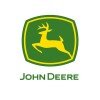
Asked in John Deere

Q. Using the energy equation, prove that the temperature profile over a flat plate is parabolic.
Temperature profile over a flat plate becomes parabolic due to the energy equation.
The energy equation describes the conservation of energy in a fluid flow.
For a flat plate, the energy equation simplifies to the heat conduction equation.
The heat conduction equation is a second-order partial differential equation.
The solution to the heat conduction equation for a flat plate yields a parabolic temperature profile.
This parabolic profile is due to the balance between heat conduct...read more

Asked in Escorts Kubota Limited

Q. Given the option between Design and Testing, which would you choose?
I would choose Design over Testing.
Design allows for creativity and innovation.
Design involves problem-solving and critical thinking.
Design offers the opportunity to create new products or improve existing ones.
Design requires collaboration and communication with cross-functional teams.
Design offers long-term career growth and advancement opportunities.

Asked in Tata Motors

Q. What are the different types of joining methods?
Different types of joining methods include welding, brazing, soldering, adhesive bonding, and mechanical fastening.
Welding involves melting and fusing two materials together, such as arc welding or gas welding.
Brazing involves heating the materials and melting a filler metal to join them, such as silver brazing or copper brazing.
Soldering involves heating the materials and melting a lower melting point filler metal to join them, such as electronics soldering or plumbing solde...read more

Asked in John Deere

Q. What are the different types of meshes, and where are they used?
Different types of meshes include triangular, quadrilateral, and hexagonal, each suited for specific applications in engineering and design.
Triangular Mesh: Commonly used in finite element analysis (FEA) for complex geometries.
Quadrilateral Mesh: Preferred in computational fluid dynamics (CFD) for better accuracy in flow simulations.
Hexagonal Mesh: Often used in grid generation for simulations requiring high resolution and efficiency.
Tetrahedral Mesh: Utilized in 3D modeling ...read more

Asked in Escorts Kubota Limited

Q. why we open inlet valve before TDC and why Spark Plug at given Particular Angle?
The inlet valve is opened before TDC to allow fresh air-fuel mixture into the combustion chamber. The spark plug is positioned at a specific angle for efficient combustion.
Opening the inlet valve before TDC ensures that the piston is moving downwards, creating a pressure difference that helps in drawing the air-fuel mixture into the combustion chamber.
This timing also allows for better mixing of the air and fuel, leading to improved combustion efficiency.
The spark plug is pos...read more

Asked in John Deere

Q. Velocity profile and shear stress profile for circular pipe and couette flow. Boundary conditions regarding the same
Explanation of velocity and shear stress profiles for circular pipe and Couette flow with boundary conditions.
Velocity profile for circular pipe is parabolic, while for Couette flow it is linear.
Shear stress profile for circular pipe is also parabolic, while for Couette flow it is constant.
Boundary conditions for circular pipe include no slip at the wall and constant pressure at the ends.
Boundary conditions for Couette flow include no slip at the stationary wall and constant ...read more

Asked in Tata Motors

Q. What are the applications of superplasticity in the automotive industry?
Superplasticity enables the forming of complex shapes in automotive components, enhancing performance and reducing weight.
Used in manufacturing lightweight body panels, improving fuel efficiency.
Facilitates the production of intricate geometries in structural components.
Examples include superplastic forming of aluminum and titanium parts.
Enhances crashworthiness by allowing for energy absorption in safety structures.

Asked in Tata Motors

Q. What are the various applications of FEA in the automotive sector?
FEA is crucial in automotive for optimizing designs, ensuring safety, and improving performance through simulation.
Crashworthiness analysis: Simulating vehicle crashes to enhance safety features.
Structural analysis: Evaluating the strength of components like chassis and suspension.
Thermal analysis: Assessing heat distribution in engine components to prevent overheating.
Vibration analysis: Studying the effects of vibrations on vehicle stability and comfort.
Fluid dynamics: Anal...read more


Q. Draw the stress-strain curve for Aluminum and mild steel.
Stress-strain curves for Aluminium and mild steel
Aluminium has a lower yield strength and ultimate tensile strength than mild steel
Aluminium has a higher strain hardening rate than mild steel
Mild steel has a higher modulus of elasticity than aluminium
The stress-strain curve for aluminium is more ductile than that of mild steel
The stress-strain curve for mild steel has a distinct yield point, while that of aluminium does not
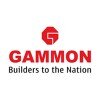
Asked in GAMMON INDIA

Q. What is comprehensive strength of OPC Ans- comprehensive strength is ranging between 33-53 MPa at 28 days ,22-27 MPa at 7days , 16-27 MPa at 3 days of curing after casting
Comprehensive strength of OPC ranges from 33-53 MPa at 28 days of curing after casting.
OPC has high compressive strength due to its chemical composition
It is commonly used in construction for its durability and strength
The strength of OPC increases with time and proper curing
Compressive strength is measured in MPa
OPC has a comprehensive strength ranging from 33-53 MPa at 28 days of curing after casting

Asked in John Deere

Q. Explain engineering and true stress-strain graphs and the different regions within them.
Explanation of engineering and true stress strain graphs and their different regions.
Engineering stress-strain graph shows the relationship between stress and strain during deformation of a material.
True stress-strain graph takes into account the reduction in cross-sectional area of the specimen during deformation.
The different regions in the graph are elastic region, yield point, plastic region, necking and fracture.
Elastic region is where the material behaves elastically an...read more

Asked in Bizsol Technologies

Q. Describe your project.
My project focused on CFD simulations to analyze fluid flow and heat transfer in various engineering applications.
Utilized ANSYS Fluent for simulating airflow over an airfoil to optimize lift and drag characteristics.
Conducted thermal analysis of a heat exchanger to improve efficiency and reduce energy consumption.
Implemented turbulence models to study the effects of different flow regimes on performance metrics.
Validated simulation results with experimental data to ensure ac...read more

Asked in Hindustan Zinc

Q. How does a 1% increase in moisture in a boiler furnace affect efficiency?
Increase in 1% moisture in boiler furnace leads to decrease in efficiency.
Moisture in fuel leads to incomplete combustion and heat loss.
Efficiency can decrease by 0.5-1% for every 1% increase in moisture.
Regular maintenance and monitoring can prevent excessive moisture in furnace.


Q. What are the areas you need to improve?
I need improvement in communication skills and technical knowledge.
Improving my communication skills will help me effectively convey ideas and collaborate with team members.
Enhancing my technical knowledge will enable me to tackle complex engineering problems more efficiently.
Developing my problem-solving skills will help me approach challenges with a systematic and analytical mindset.
Gaining more practical experience through hands-on projects will enhance my overall engineer...read more

Asked in John Deere

Q. Energy equation and terms in it. There physical importance
The energy equation is a mathematical representation of the conservation of energy principle in various forms.
The energy equation states that the total energy of a system remains constant.
It includes terms such as kinetic energy, potential energy, internal energy, and work done.
Kinetic energy is the energy possessed by an object due to its motion.
Potential energy is the energy stored in an object due to its position or condition.
Internal energy is the sum of the microscopic k...read more

Asked in Escorts Kubota Limited

Q. If we change the angle, what effect will occur?
Changing the angle can have various effects depending on the context.
Changing the angle can alter the direction or trajectory of a moving object.
In physics, changing the angle of incidence can affect the amount of reflection or refraction of light.
In engineering, changing the angle of a structural component can affect its stability or load-bearing capacity.
In mathematics, changing the angle can affect the trigonometric functions and their values.
In sports, changing the angle ...read more

Asked in Escorts Kubota Limited

Q. Draw the indicated diagram of an S.I./C.I. engine and explain it.
A S.I./C.I. engine is a type of internal combustion engine that operates on either spark ignition or compression ignition.
S.I. engine stands for Spark Ignition engine, where the fuel-air mixture is ignited by a spark plug.
C.I. engine stands for Compression Ignition engine, where the fuel-air mixture is ignited by the heat of compression.
In a S.I. engine, the fuel-air mixture is drawn into the cylinder during the intake stroke, compressed during the compression stroke, ignited...read more

Q. What is a stress-strain curve for MS during loading?
A stress strain curve for MS during loading shows the relationship between stress and strain in the material.
The curve has three distinct regions: elastic, plastic, and fracture.
In the elastic region, stress is proportional to strain.
In the plastic region, the material deforms permanently.
The fracture region is where the material breaks.
The curve can be used to determine the material's yield strength, ultimate strength, and ductility.

Q. Why is rubber used in vibration isolation instead of steel?
Rubber is used in vibration isolation due to its ability to absorb shock and dampen vibrations.
Rubber has high elasticity and can deform under pressure, which helps to absorb shock and dampen vibrations.
Steel is a rigid material and does not have the same ability to absorb shock and dampen vibrations as rubber.
Rubber is also lightweight and easy to install, making it a practical choice for vibration isolation applications.
Examples of vibration isolation applications include e...read more

Asked in John Deere

Q. Draw a free body diagram of each joint in a truss problem.
Analyze a truss structure by drawing Free Body Diagrams (FBD) for each joint to determine forces in the members.
Identify all joints in the truss structure.
Draw the FBD for each joint, showing all forces acting on it.
Use equilibrium equations (ΣF_x = 0, ΣF_y = 0) to solve for unknown forces.
Example: For a joint with two members, set up equations based on angles and forces.
Consider external loads and support reactions in your FBD.
Interview Experiences of Popular Companies






Calculate your in-hand salary
Confused about how your in-hand salary is calculated? Enter your annual salary (CTC) and get your in-hand salary


Reviews
Interviews
Salaries
Users










